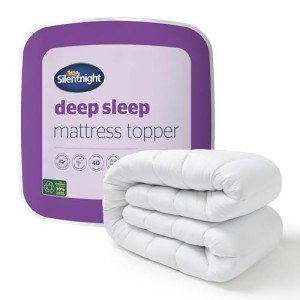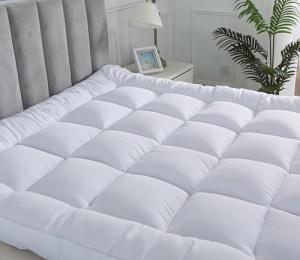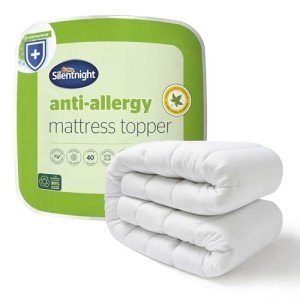Super Soft Hypoallergenic Mattress Topper for Bunk Beds
When it comes to bunk beds, comfort and safety are paramount, especially for children or individuals requiring a good night’s sleep. One effective way to enhance the comfort of a bunk bed is by incorporating a high-quality mattress topper. This guide explores the features, benefits, and options available for super soft hypoallergenic mattress toppers for bunk beds, providing vital information to help consumers make informed decisions.
Why Consider a Mattress Topper for Bunk Beds?
Bunk beds are often a staple in children’s rooms, guest rooms, or small living spaces. However, the mattresses that come standard with many bunk beds can lack comfort and support. A mattress topper can offer several benefits:
- Improved Comfort: Adds an extra layer of cushioning that makes the sleep surface softer and more inviting.
- Enhanced Support: Can improve spinal alignment through additional support, beneficial for growing children and adults alike.
- Hypoallergenic Properties: Reduces the risk of allergens troubling sensitive sleepers.
- Temperature Regulation: Helps to regulate body temperature by wicking away moisture and maintaining an optimal sleep environment.
Key Features of a Super Soft Hypoallergenic Mattress Topper
When selecting a mattress topper for a bunk bed, several features should be considered:
- Material: Common materials include memory foam, latex, and gel-infused foams. Each material has its own benefits regarding softness, support, and cooling properties.
- Thickness: Mattress toppers typically range from one to four inches in thickness. A thicker topper may provide more cushioning but could also increase the height of the bunk bed, which should be considered for safety.
- Hypoallergenic Properties: Look for materials that resist dust mites, mold, and mildew, making them ideal for allergy sufferers.
- Ease of Cleaning: A removable and machine washable cover can make maintenance hassle-free.
- Breathability: Toppers that allow airflow can help prevent heat retention, fostering a comfortable sleep experience.
Popular Types of Mattress Toppers for Bunk Beds
Here are some popular types of super soft hypoallergenic mattress toppers to consider:
| Type | Description | Benefits |
|---|---|---|
| Memory Foam | Conforms to the body, providing personalized support. | Excellent pressure relief; ideal for sleepers with joint pain. |
| Latex | Made from natural rubber, it offers responsive support and durability. | Eco-friendly, resistant to dust mites and mold. |
| Gel-Infused Foam | Combines the properties of traditional foam with cooling gel materials. | Great for temperature regulation and a soft feel. |
| Down Alternative | Made from synthetic fibers that mimic the softness of down feathers. | Soft and fluffy; hypoallergenic and washable. |
Benefits of Hypoallergenic Mattress Toppers
Choosing a hypoallergenic mattress topper can significantly enhance sleep quality for individuals prone to allergies. Here are the primary benefits:
- Reduces Allergens: Hypoallergenic materials deter dust, mold, and other allergens that could trigger uncomfortable reactions.
- Optimal Health: Contributes to a healthier sleeping environment, leading to improved overall health.
- Durability: Many hypoallergenic mattress toppers are made from durable materials that provide long-lasting comfort and support.
FAQs
1. How often should I replace my mattress topper?
Generally, mattress toppers should be replaced every 3 to 5 years. However, if you notice significant wear or a decline in comfort, it might be time for a new one sooner.
2. Can I use a standard mattress topper for a bunk bed?
It is advisable to check the dimensions of the bunk bed’s mattress and select a topper that fits properly. Consider the height of the bed and the safety guardrails when choosing the thickness of the topper.
3. Are hypoallergenic mattress toppers more expensive?
Hypoallergenic mattress toppers can be slightly more expensive than traditional options. However, investing in a high-quality topper can significantly enhance sleep quality and may be worth the extra cost.
4. How do I clean a mattress topper?
Many mattress toppers come with removable covers that can be machine-washed. If your topper does not have a cover, spot clean with mild soap and water, and ensure it is thoroughly dried before placing it back on the bed.
5. Will a mattress topper make my bunk bed too high?
Choosing a thicker mattress topper will add height to the bunk bed. Measure the overall height and ensure it fits comfortably and safely under the guardrails.
Opting for a super soft hypoallergenic mattress topper for a bunk bed is not only a way to boost comfort but also a proactive step toward creating a healthier sleeping environment. With various materials available, each offering unique benefits, one can easily find a topper that suits individual needs. Whether for a child's room, a guest room, or any space featuring a bunk bed, investing in the right mattress topper can make all the difference in achieving restful nights and rejuvenating sleep.
When shopping, consider factors such as material, thickness, and hypoallergenic properties to ensure you select the ideal mattress topper that aligns with your comfort and safety requirements. Your sleep quality is essential, and a mattress topper is an excellent investment towards achieving that nightly goal.






